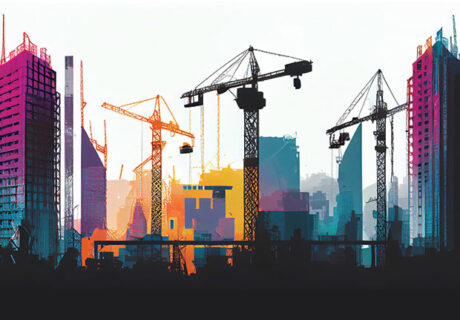Take Five With David Ruthven
In this series, Healthcare Design asks leading healthcare design professionals, firms, and owners to tell us what’s got their attention and share some ideas on the subject.
Dave Ruthven, the 2014 HCD 10 Rising Star, is the creative director at NXT Health, a design incubator focused on improving the healthcare experience. Here, he shares his thoughts on five technology trends that could shape and influence the future of healthcare delivery and design in the years to come.
1. Geofence
Geofences are dynamically generated, digital boundaries that trigger notifications when a user enters into a predetermined zone. Initial development was primarily for security applications (put down that baby!), but the recent integration into smart phones by Apple (iBeacon) and Google (Bluetooth LE) has lead to the rapid development of new uses for the technology, such as location-based alerts from businesses. Recent advances enable devices to provide triangulated “micro-location” within an inch of the users position and low-cost transmitters are becoming available that would allow more proliferation (and subsequent data gathering) from a wide range of objects. The implications for healthcare are exciting. Geofences could lead to heightened locational awareness for caregivers, precise event tracking for patients, and maybe some indoor turn-by-turn navigation so that visitors don’t get lost trying to find the cafeteria anymore.
2. Internet of things
We’ve heard about how our toaster will soon be talking with the refrigerator (about us, most likely behind the dishwasher’s back). The Internet of Things, a term coined by researchers at MIT for the interconnection of everyday objects through network technology, has seen rapid growth in recent years, with projections predicting more than 30 billion connected devices by 2020. Although typical consumers could care less about refrigerator awareness, new smart objects are being developed with the goal of improving user’s physical and mental well-being, as well as provide a sense of security and constant connection to loved ones. Patients today are surrounded by technology that monitors and sustains them, but does that technology truly “care” about their wellbeing? As consumers become more comfortable with wellness monitoring technology (such as the Fitbit Flex and Sen.se Mother), how will this shift translate to the tools caregivers and patients use on the front line?
3. Robot caregivers
The rapid growth of the aging population and subsequent shortage of skilled primary and long-term nursing professionals have given rise to what many still consider science fiction: robot caregivers. While having human-to-human contact is still the ideal scenario, the reality is that the demand for care far outpaces the supply of human caregivers able to render it. Robots will (and should) never replace caregivers completely, but in appropriate circumstances they are more than capable of supplementing care (Cosmobot) and providing companionship (Paro). Robot caregivers could also provide functional features to hospital staff, such as UV-light space disinfection, heavy lifting, and supply fetching, in order to free up more time for direct patient interaction.
4. IFTTT
Patients have enough going on in hospitals that they shouldn’t have to worry about the simple things. With all the monitoring technology used in a typical healthcare environment, there’s limitless potential to harness data in new ways for "If This, Then That" (IFTTT) type functions. This methodology of connecting disparate services and objects with one another like a modern day switchboard could lead to new possibilities for providers to create better experiences for patients. For example, monitoring systems could ping a concierge robot (see point #3) that a patient is becoming dehydrated and deliver a glass of water before they even think to ask a nurse for assistance. A smart cup could then trigger a silent alert when it dips below a certain threshold, bringing robot Jeeves back with a fresh refill (but not if the bed detects the patient is sleeping).
5. Upgradia
As everyday consumers of technology, we’re accustomed to a constant stream of updates that refine and improve (or ruin, looking at you iOS 7 Calendar) applications we use on a day-to-day basis. But what if this could translate to physical objects that we come in contact with every day? This phenomenon is known as Upgradia, and it’s driven by consumer’s desire for constant refinement and improvement of existing objects as opposed to the wasteful model of planned obsolescence. Commonplace in digital tech, this trend is starting to emerge in physical goods, such as the Samsung TV Evolution Kit that enables consumers to update equipment without having to drop the old model off at Goodwill. How could this concept translate to a hospital environment, where hacking happens every day by front line staff trying to improve care processes?

David Ruthven
Want to share your Top Five? Contact senior editor Anne DiNardo at adinardo@vendomegrp.com for submission instructions.


